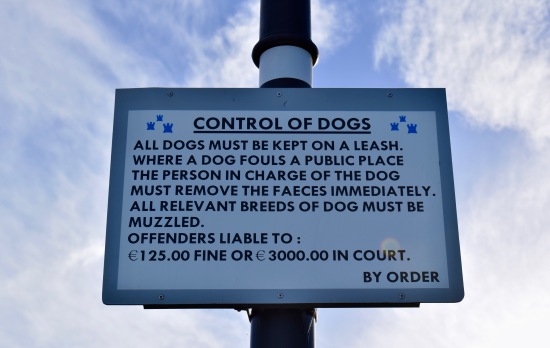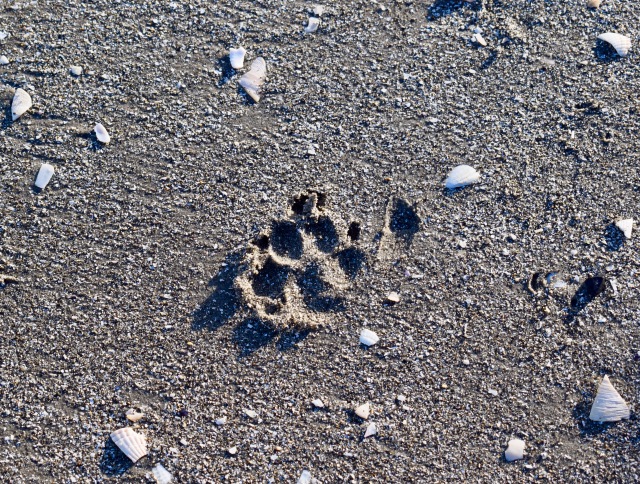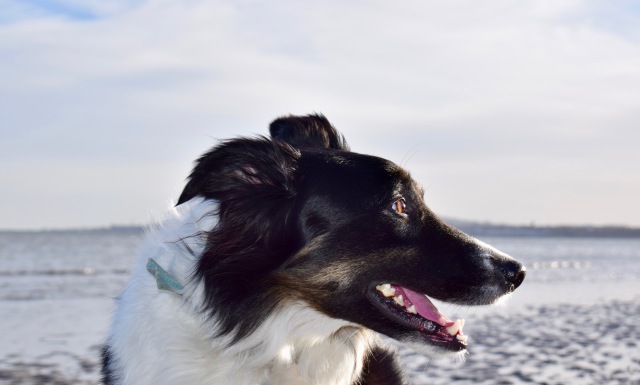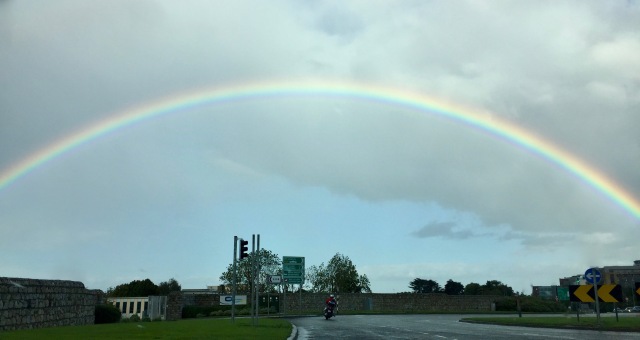It’s January 8th and Christmas is just wrapping up in Ireland. From Christmas Eve to St. Stephen’s Day on the 26th, to New Year’s and “Little Christmas” on January 6th, the Irish have a full festive fortnight in which to enjoy the Christmas season. The post offices close, a lot of people take a couple of weeks off work and the celebration doesn’t end quite when you think it would. Upon coming here last summer, I had never heard of Little Christmas and didn’t know anything about St. Stephen’s Day beyond the line from Good King Wenceslas. It was quite a treat to learn about, and partake in, the holidays that were completely new to me, and it certainly made the already enjoyable holiday season that much more fun.

This little difference at the end of December got me thinking about some other peculiarities in Ireland that you may not realize are not quite the same as they are in the States, and I thought I would talk about a few of them for a fun little first post of 2017.
-
Shopping and Dining: Differences and Similarities
It should come as no surprise that the quintessential worldwide American food/beverage chains are common in Ireland – Starbucks still seems to be everywhere, and you can’t go far without finding a Subway, Burger King or McDonald’s (although Kelsey says not to expect the same burger – the price and quality both tend to be a little higher). It was slightly more interesting to see chains like KFC and Hollister, and a few Texaco petrol stations. These made sense, though. It was the subtly different but unrelated chains that I found to be even more surprising.
There is no Johnny Rockets in Ireland, but you can find a strikingly similar ‘50s American diner called Eddie Rockets (owned by a different company), and the atmosphere and logo are alike enough that I went as far as to look up whether or not they were related.

I was happy to find an affordable clothing and home goods store that can be found in most malls, and its name (Penney’s) led me to believe it might be related to the familiar J.C. Penney chain that I know from the Midwest. Again, I was surprised to find out that they are completely unrelated; although, interestingly, the Penney’s here has a few locations in the States that go by its more common name – Primark.

As an avid Victoria’s Secret PINK clothing shopper, I was very excited to see a PINK store here in Ireland. Imagine my disappointment when I found out it was a completely unrelated designer clothing store – mainly aimed at men’s fashion! The font is similar and the brand name is capitalized, but this store just so happens to be named after a man named Thomas Pink – who most assuredly has nothing to do with the PINK I know and love.

I did, however, find one similar chain that was simply too much like its American counterpart to be a coincidence. It came as no surprise that the extremely affordable department store here – TK Maxx – is owned by the same company that owns the American TJ Maxx.

On a somewhat related note, Ireland doesn’t have a one-stop-shop anywhere near the level of Wal-Mart, Target, Meijer and other American stores in the same vein. It is much more common to see rows of smaller, more specialized stores. For instance, a copy-print store next to a book store next to a shoe store. This is nicer in a lot of ways and definitely adds to the quintessential Irish charm, but I can’t say I would mind being able to buy a pack of bagels and a $5 DVD at two in the morning every once in a while.
The closest thing I could find is a brilliantly designed store called Argos. There are a few  little toys, electronics and various small items on the walls when you walk into the store, but the floor is dominated by banks of computers and catalogues which you use to look up the item you want – whether it be a TV, toaster, LEGO set, etc. – and write down its catalogue number. You take the slip of paper with that number up to the counter, pay for your purchase, and wait while an employee pulls your order from the attached warehouse and brings it to another counter for you to collect. It is affordable, convenient and quick.
little toys, electronics and various small items on the walls when you walk into the store, but the floor is dominated by banks of computers and catalogues which you use to look up the item you want – whether it be a TV, toaster, LEGO set, etc. – and write down its catalogue number. You take the slip of paper with that number up to the counter, pay for your purchase, and wait while an employee pulls your order from the attached warehouse and brings it to another counter for you to collect. It is affordable, convenient and quick.
Also, a sad side note – there is currently no Amazon Prime in Ireland. That means no 2-day shipping and the inventory that may be shipped here at a decent cost is much smaller. 😦
-
Most Things Close Earlier
I mentioned not being able to buy random items at 2 AM, but it was quite difficult for me to get used to almost everything closing by 5 or 6 in the evening. Even pubs, which might stay open until midnight or 1, usually stop serving food by around 9 o’clock. It’s also very rare to see “Open 24 Hours” signs anywhere. I have gotten used to planning, sometimes a week in advance, when I would be able to pick up dog food after class since I sometimes couldn’t get to a pet store by the time it closed at 6.
It happens at the other end, too – there was one day I wanted to grab Starbucks before class and was shocked to not be able to find one that opened before 7 or 7:30 in the morning!
These shorter hours coupled with (what feels like) random bank holidays certainly took some adjusting to, but I definitely see the appeal for the people who work in those industries.
-
Interesting License Requirements
I was a little shocked to read, in preparation of moving here, that any household with a TV is required to have a TV license. The current standard cost is 160 Euros a year, and you will be fined if you don’t have it up-to-date. Luckily, only one license is required per household, regardless of the number of televisions.
So where does the money go? Most of it pays for public broadcasting and is used on programs promoting Irish culture and heritage and improving adult literacy, and providing funding for the primary news and cultural channel, RTE.
In addition to the TV license, you must also pay a license to own a dog. This is currently set at 20 Euros a year per dog, or 140 Euros for the lifetime of the dog. Unfortunately, I haven’t been able to find any concrete information about where that money goes.
Along with licensing, there are also leashing and muzzling laws for certain breeds: these breeds include German Shepherd, Akita, Pit Bull and more. These breeds are required to be muzzled in any public place at all times.
-
Energy Consciousness
It was something I heard early and often when we first moved here: “Don’t forget to turn off the immersion!” I live in a more rural area, and it’s very common in houses like mine to have the water supply heated by a source that, rather than being constant like a water heater in the US, is controlled by a switch or timer so no energy is wasted. This is the “immersion.” As someone who didn’t need to commit this to memory for 26 years, it was a bit of an adjustment and a common source of stress in my early days in Ireland. Obviously this is important to my Irish landlords partly because nobody likes throwing money away, but I think it also shows a certain energy consciousness ingrained in the culture here that you don’t necessarily see as much back home.
It isn’t just the immersion: recycling is the norm, including a separate bin for food waste. Clothes dryers are not nearly as common as they are in the States, and most people (around us at least) still use clotheslines. Seemingly every single power outlet I’ve seen has had a switch that can be turned off when not in use. (As a side note, if you’re reading this and planning on visiting Ireland, remember that the power outlets here also use a different plug than the States – this plug is referred to as “Type G” and is also used throughout the UK.)
-
Cell Phone Plans
While we’re on the subject of saving money, let’s talk about cell phones. In the United States it’s common to pay upwards of $50 for a plan that doesn’t even offer unlimited data, and a lot of plans tend closer to $70. Coming from this, I was absolutely floored to see the pricing on plans in Ireland – so much so that I assumed there must be some catch.  Currently I pay a monthly 20 Euro top-up which covers unlimited 4G data, unlimited texting, and unlimited in-network calls (and free calls all weekend). It gets better, though, as any fees accrued from calling out-of-network, in-app purchases or roaming data actually come out of that 20 Euro top-up, rather than adding on to your bill. I made enormous use of this when I first moved here, as I had to make frequent calls back to the States to sort some things out, and was able to pay for these calls out of the 20 Euros that I had already paid.
Currently I pay a monthly 20 Euro top-up which covers unlimited 4G data, unlimited texting, and unlimited in-network calls (and free calls all weekend). It gets better, though, as any fees accrued from calling out-of-network, in-app purchases or roaming data actually come out of that 20 Euro top-up, rather than adding on to your bill. I made enormous use of this when I first moved here, as I had to make frequent calls back to the States to sort some things out, and was able to pay for these calls out of the 20 Euros that I had already paid.
The big American networks, such as Verizon and Sprint, are nonexistent here. Instead the big three are probably Vodaphone, Tesco and 3. I have 3, which is also available in the UK, and when travelling there I can use my phone plan at no additional cost. There is also a very minor add-on fee for using it elsewhere in the EU, which is extremely convenient.
-
Sports
You won’t find much baseball, basketball or hockey here in Ireland, and American football – while somewhat popular – isn’t followed all that closely either. What you will see are rugby, golf, horse and greyhound racing, MMA, boxing and, of course, soccer. Bigger than all of those, though, are the archetypal Irish sports of Gaelic football and hurling, which are both overseen by the Gaelic Athletic Association. The most interesting thing about this is that none of the sports in the GAA are professional – they are entirely amateur. This has a predictably enormous effect on ticket prices – my Irish friends were shocked when Kelsey mentioned the general cost of an NFL ticket to them.
-
Roads and Driving
The first thing you will notice about Irish roads, as soon as you leave the motorways or County Dublin, is that they are small. Many roads are narrow enough that if two cars meet going the opposite direction, one will have to pull over into the grass to let the other pass. In addition to being narrow, these roads also tend to be very winding. Roundabouts are extremely common and many times will have multiple lanes, figure-eight structure, and traffic lights. This can be a lot to consider when you’re first driving in Ireland, since you’re also on the left side and going around the roundabout clockwise instead of anti-clockwise.
I’ve tried to learn a little bit about the road system in Dublin from a combination of online research and friends who have grown up here. What I have found is this: since the Celtic Tiger, a decade of enormous growth in the economy and infrastructure of Ireland from the mid-‘90s to the mid-‘00s, the traffic in Dublin has grown a lot due to several factors. The combination of large multinational corporations in Dublin, economic growth leading to more people driving rather than relying on public transit, and a population boom in the last fifteen years has led to a bit of strain on the motorway encircling the city of Dublin, the M50. Rush hour tends to look more like Chicago than you would expect from a modest (by American standards) city of about 1.3 million. I had a hard lesson in this when dealing with that traffic every morning and evening on my way to and from UCD first semester, so I can attest to it.
The common car types are what I’ve come to expect in Europe: small, compact and mostly hatchbacks. I see more sedans here than I did in my short time in Italy and Austria, but SUVs are extremely rare and you would be hard-pressed to find a pick-up truck that isn’t a company vehicle. I honestly can’t even remember the last pickup truck I saw. It’s certainly a far cry from my home state of Indiana.

Bonus Observations!
- When you order a beer at the pub, it will almost definitely come in a glass with the name of the brewer on it. Guinness obviously comes in a Guinness glass, Heineken comes in a Heineken glass, Orchard Thieves (amazing cider!) comes in an Orchard Thieves glass, and so on.
- I don’t think I’ve seen a single house with vinyl or wood siding here. It’s almost all brick or flat stone.
- Kelsey insisted that I point out that lamb is often the same price as chicken, and barely more than beef.
- Hopefully you don’t get thirsty easily, because the drinks here are small and you can forget about a free refill. Also, when you go to a restaurant, don’t expect water to be brought to your table without you asking for it.

Some of these changes have certainly taken some getting used to, and I don’t think any of them are bad by any means. It has been a fun and exciting learning experience, and hopefully if you’re planning on visiting (or moving to) Ireland then some of this will come in handy.




































































































 little toys, electronics and various small items on the walls when you walk into the store, but the floor is dominated by banks of computers and catalogues which you use to look up the item you want – whether it be a TV, toaster, LEGO set, etc. – and write down its catalogue number. You take the slip of paper with that number up to the counter, pay for your purchase, and wait while an employee pulls your order from the attached warehouse and brings it to another counter for you to collect. It is affordable, convenient and quick.
little toys, electronics and various small items on the walls when you walk into the store, but the floor is dominated by banks of computers and catalogues which you use to look up the item you want – whether it be a TV, toaster, LEGO set, etc. – and write down its catalogue number. You take the slip of paper with that number up to the counter, pay for your purchase, and wait while an employee pulls your order from the attached warehouse and brings it to another counter for you to collect. It is affordable, convenient and quick.


 Currently I pay a monthly 20 Euro top-up which covers unlimited 4G data, unlimited texting, and unlimited in-network calls (and free calls all weekend). It gets better, though, as any fees accrued from calling out-of-network, in-app purchases or roaming data actually come out of that 20 Euro top-up, rather than adding on to your bill. I made enormous use of this when I first moved here, as I had to make frequent calls back to the States to sort some things out, and was able to pay for these calls out of the 20 Euros that I had already paid.
Currently I pay a monthly 20 Euro top-up which covers unlimited 4G data, unlimited texting, and unlimited in-network calls (and free calls all weekend). It gets better, though, as any fees accrued from calling out-of-network, in-app purchases or roaming data actually come out of that 20 Euro top-up, rather than adding on to your bill. I made enormous use of this when I first moved here, as I had to make frequent calls back to the States to sort some things out, and was able to pay for these calls out of the 20 Euros that I had already paid.
